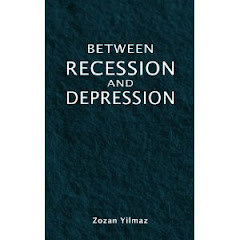Japan has been one of the miracle countries. On a land of nearly 80% of mountains unsuitable for agriculture they still managed to be the ninth largest producer of rice in the world, the main ingredient of their famous sushi. As an island being exposed to tsunamis, earthquakes they managed to build the houses, which can survive the earthquake at magnitude of 8.
Rank of number two in the league of global GDP, forth largest exporter and sixth largest importer plus enormous growth between 1960 and 1980 made the country a role model for the rest of the world in their management concepts such as kaizen (continuous improvement), just-in-time (production upon demand).
After their lost decade of 1990s, and a global world shaken by credit crunch, they are challenged again with an economy of deflation keeping the consumption low, weak earnings keeping investment low, government debt already with over 180% of GDP.
However, Japan managed to bring the exports, the only variable left to play with; in their favour in December 2009 at a level of ¥5.41trillion ($59billion). The country's exports are growing again after 15 months of consecutive fall. Yes, they are very below their peaks considering the fact that it was ¥12.7trillion ($113billion) in November 2007. What matters though is to gain the momentum of growth again.
Can Japan be heading to a new miracle of achieving good growth of GDP despite the challenges of depressed consumption, investment items and a government spending, which is restricted with a cumulatively high debt level and credit rating constraints?
The answer can be “yes”.
My nephew

My niece

My book

Search This Blog
Scribnia Ranking
Blog Archive
- May (2)
- March (1)
- February (1)
- January (21)
- December (27)
- November (13)
- October (2)
- August (10)
- July (5)
- June (4)
- May (2)
- April (6)
- March (5)
- February (4)
- January (10)
- November (2)
- September (6)
- August (4)
- July (2)
- June (10)
- May (2)
- March (1)
- January (1)
- December (1)
- November (1)
- September (1)
- August (1)
- May (1)
- April (1)
- March (3)
- February (2)
- January (4)
- December (10)
- November (2)
- October (1)
- September (1)
- June (1)
- April (5)
- March (3)